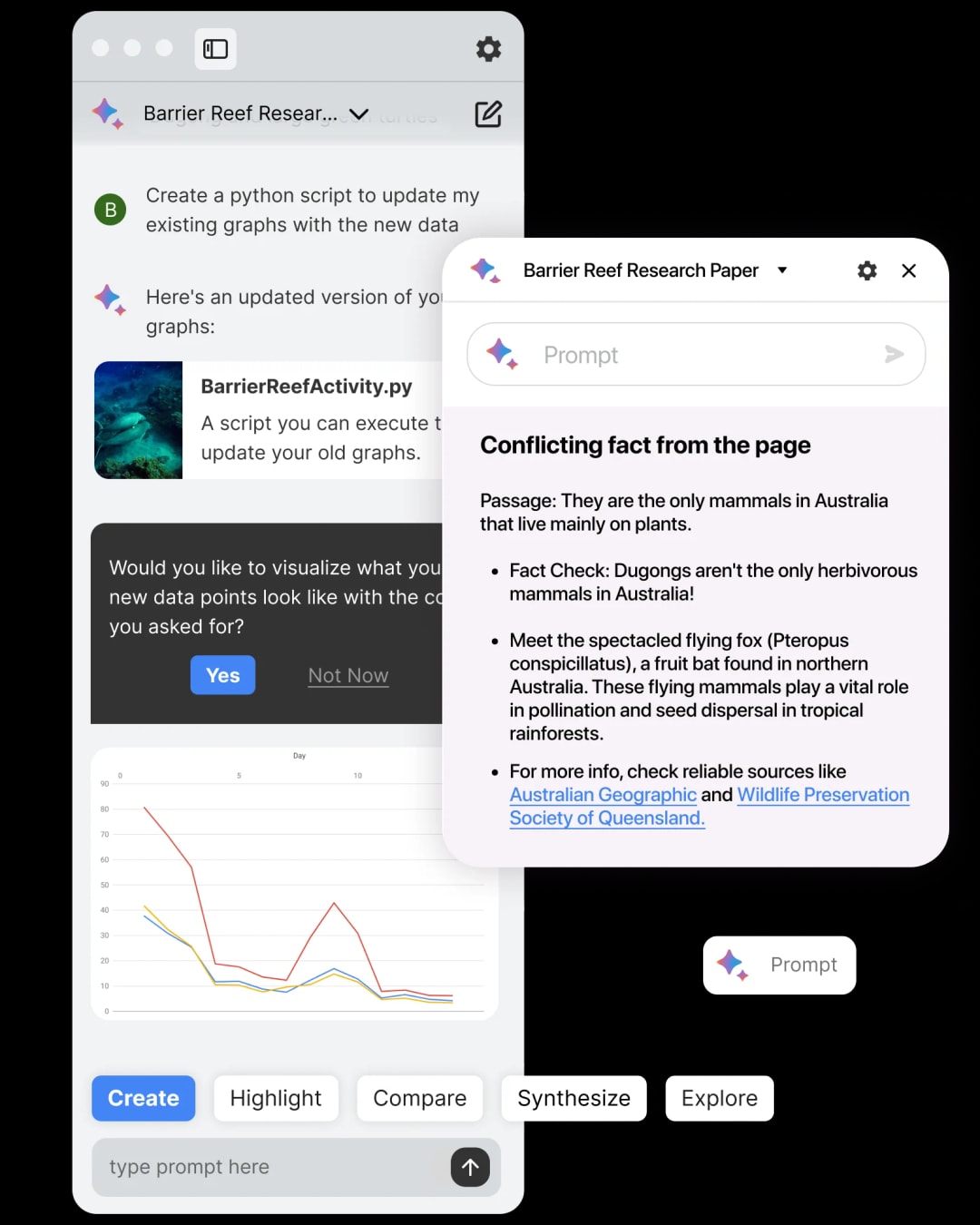
Team: Victor Tran and Bryan Huang
Timeline: Winter 2023
Tools used: Figma, Miro, Adobe Creative Suite, Prototype testing tools
Role: UX Designer, UI Designer, AI Interaction Specialist
🏆 Goals
- Create an AI assistant that offers proactive interactions based on user needs
- Guide users with clear action verbs to improve understanding of AI capabilities
- Validate information in real-time to combat misinformation in educational settings
📈 Non-Goals and other considerations:
- Developing a fully functional AI backend system
- Replacing human teachers or educational professionals
- Creating a generic chatbot without education-specific features

⚠️ Problem: AI tools are static and spread misinformation
Existing AI tools often provide static interactions and can disseminate misinformation, leading to user frustration and distrust. Users are frequently unsure about the capabilities of AI tools and are frustrated by their inability to proactively address needs. Additionally, the prevalence of misinformation on the web poses challenges to obtaining accurate information for research and learning.
✉️ Context: Students need reliable AI for effective research
Enhancing AI tools to offer proactive interactions and real-time information validation can significantly improve the student learning experience and build trust. Developing an AI assistant that anticipates user needs and ensures information accuracy is vital for effective research and learning in today's information-rich environment.
✏️ Defining product requirements
Identified three core pillars of functionality that would address key user pain points with current AI assistants in educational contexts.
💭 Why:
To create a clear framework for an AI assistant that would truly enhance the student research experience rather than simply replicating existing tools with their inherent limitations.
📚 Learnings and Decisions made
- Proactive assistance is essential to reduce cognitive load during research tasks
- Clear action verbs help users understand AI capabilities without technical knowledge
- Real-time fact validation must be built into the core experience, not added as an afterthought
- Focus on educational use cases first before expanding to other domains

🔎 Interface Exploration
Designed visual concepts to demonstrate how proactive AI assistance, action verb guidance, and information validation would work in practice.
💭 Why:
To visualize how these abstract concepts would manifest in a user interface that students could easily navigate and trust during their research process.
📚 Learnings and Decisions made
- Visual cues for validated vs. questionable information need to be immediately recognizable
- Action verbs should be prominently displayed to guide user interaction
- Interface should anticipate common research workflows and suggest next steps
- Design should reduce anxiety around AI "black box" issues through transparency

💡 Core Solutions Implemented
-
Guided by Action Verbs: Implemented a system that helps users understand AI capabilities and offers shortcuts to optimize research workflows. This reduces the learning curve and makes advanced AI features accessible to all students.
-
Proactive Interactions: Developed an interface that reduces user friction by initiating contextual prompts based on research patterns and enhancing the overall research experience. This creates a world where the AI assistant is capable of recognizing and meeting users where their needs are.
-
Real-Time Validation: Created a comprehensive validation system that filters out misinformation and provides evidence to support findings, essential for combating misinformation in today's educational environment.
💥 Impact:
The 10-day AI + UX Design challenge resulted in a comprehensive prototype that received positive feedback from student testers. The action verb guidance system was particularly praised for making AI capabilities transparent and accessible.

⭐ What's Next?
Future development would focus on expanding the AI's knowledge base specifically for educational contexts and developing more sophisticated information validation algorithms. We would also explore partnerships with educational institutions to integrate Schola into existing learning management systems and research platforms.
🪞 Takeaways
Rapid problem space definition is crucial for effective solution iteration in AI design.
Clear user goals and empathy are essential for successful educational AI tools.
Collaboration and continuous feedback loops were invaluable in developing Schola's core features.